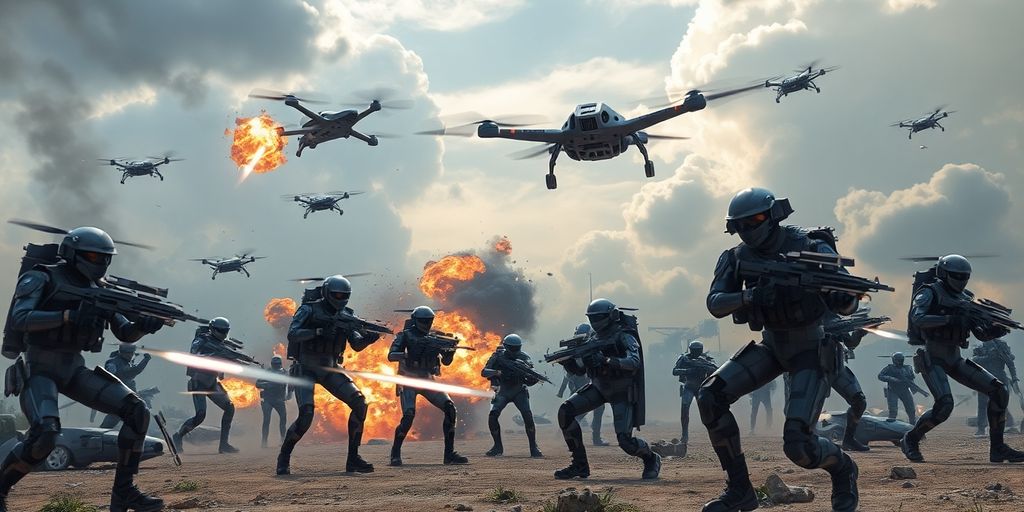In a recent episode of the Financial Times’ Tech Tonic podcast, experts gathered to discuss the evolving landscape of weapons technology and its implications for global geopolitics. The conversation highlighted advancements in defense tech, particularly in the context of the ongoing conflict in Ukraine and the rising tensions between the U.S. and China.
Key Takeaways
- The war in Ukraine has accelerated investment in defense technology, particularly in drones and robotics.
- China is making significant strides in military technology, including hypersonic missiles and AI integration.
- The geopolitical balance is shifting, with China closing the gap with the U.S. in military capabilities.
- Start-ups are emerging as key players in defense tech, challenging traditional defense contractors.
The Acceleration of Defense Technology
The ongoing conflict in Ukraine has acted as a catalyst for innovation in defense technology. Experts noted that the war has exposed gaps in European defense spending, particularly in research and development. Between 2011 and 2022, European governments allocated only 4% of their defense budgets to R&D, compared to 14% in the U.S. This disparity has prompted European nations to rethink their investment strategies in defense innovation.
China’s Military Advancements
China’s military modernization efforts are noteworthy, with advancements in hypersonic missiles and military drones. The Chinese Navy has surpassed the U.S. Navy in size, and the country is rapidly expanding its nuclear capabilities. By 2035, projections suggest that China could deploy as many nuclear warheads as the U.S. and Russia currently have.
- Key Areas of Focus for China:
- Hypersonic Missiles: China is reportedly ahead in this technology, posing a significant challenge to U.S. military strategy.
- Drones: The rapid development of military drones is a priority, with state-owned companies leveraging the robust electronics supply chain in China.
- AI Integration: China is investing heavily in artificial intelligence to enhance military capabilities, particularly in command and control systems.
The Role of Start-Ups in Defense Tech
The podcast highlighted the emergence of new defense tech companies that are challenging traditional defense contractors. Start-ups like Palantir and Anduril are gaining traction by offering innovative solutions and faster development cycles. These companies are increasingly being recognized for their potential to revolutionize defense procurement and technology.
- Advantages of Start-Ups:
- Agility: Start-ups can adapt quickly to changing military needs.
- Innovation: They often focus on cutting-edge technologies that traditional companies may overlook.
- Cost-Effectiveness: Start-ups can provide solutions at a lower cost compared to established defense primes.
Geopolitical Implications
The discussions also touched on how advancements in defense technology are reshaping geopolitical calculations. As China continues to expand its military capabilities, the U.S. is faced with the challenge of maintaining its strategic advantage in the Indo-Pacific region. The podcast emphasized the importance of alliances and collaborative defense efforts among U.S. allies in Asia to counterbalance China’s growing influence.
Conclusion
The future of warfare is being shaped by rapid advancements in technology, with significant implications for global security. As nations invest in new defense technologies, the balance of power is shifting, and the role of innovative start-ups is becoming increasingly critical. The discussions from the Tech Tonic podcast underscore the need for continued investment in defense innovation to address emerging threats and maintain strategic stability in a rapidly changing world.
Sources
- Future weapons: Tomorrow’s technology, Financial Times.
- Future weapons — Tomorrow’s technology, Financial Times.

Founder Dinis Guarda
IntelligentHQ Your New Business Network.
IntelligentHQ is a Business network and an expert source for finance, capital markets and intelligence for thousands of global business professionals, startups, and companies.
We exist at the point of intersection between technology, social media, finance and innovation.
IntelligentHQ leverages innovation and scale of social digital technology, analytics, news, and distribution to create an unparalleled, full digital medium and social business networks spectrum.
IntelligentHQ is working hard, to become a trusted, and indispensable source of business news and analytics, within financial services and its associated supply chains and ecosystems










